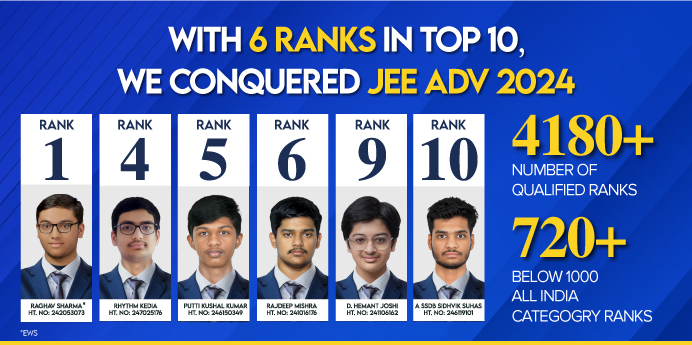





Courses

By Shailendra Singh
|
Updated on 17 Apr 2025, 11:42 IST
The Joint Entrance Examination (JEE) Mains is one of the most competitive and challenging entrance exams in India. It serves as the gateway to some of the most prestigious engineering institutions in the country. Every year, lakhs of aspiring engineers sit for this exam with the dream of securing a seat in their desired college.
However, the JEE Mains is not just about getting the correct answers; it also involves dealing with negative marking, which can significantly impact your overall score. In this comprehensive guide, we will discuss strategies to minimize negative marking in the JEE Mains examination for better results.
Before we delve into strategies for minimizing negative marking, it’s essential to understand what negative marking is and why it exists. Negative marking is a system used in many competitive exams, including the JEE Mains, to discourage random guessing. Here’s how it works:
The primary purpose of negative marking is to ensure that candidates answer only the questions they are reasonably sure about, rather than guessing randomly. In the JEE Mains, as of my last knowledge update in September 2021, the marking scheme involved +4 marks for a correct answer and -1 mark for a wrong answer in the Multiple Choice Questions (MCQs) section. In the Numerical Value Questions (NVQs) section, there was no negative marking.
Now, let’s explore effective strategies to minimize negative marking in the JEE Mains examination:
One of the most fundamental ways to reduce negative marking is through thorough preparation. The more you know and understand the subject matter, the less likely you are to make mistakes. Make a study plan, cover all the topics, and solve a variety of problems to build a strong foundation in the subjects.
“Practice makes man perfect,” Take advantage of JEE Mains mock tests to simulate the real exam environment. Mock tests not only help you gauge your preparedness but also train you to manage time effectively and make informed guesses when necessary.

Before you select an answer, take a moment to understand the question thoroughly. Read it carefully, identify key information, and analyze what it’s asking. Sometimes, the correct answer can become apparent by just breaking down the question.
In multiple-choice questions, try to eliminate obviously incorrect answer choices. This significantly improves your odds of selecting the correct answer if you’re unsure about the right one. Even if you have to guess, your chances are better with fewer options to choose from.
For questions you find challenging, use the process of elimination. Start by eliminating options you believe are incorrect. This narrows down your choices and increases the probability of guessing correctly if you can’t determine the answer definitively.
If you’re running out of time or are unsure about an answer, don’t leave it blank. In the JEE Mains, if there’s no negative marking for unanswered questions, take a guess. It’s better to have a chance at gaining some marks than leaving it empty and gaining nothing.
Effective time management is crucial in the JEE Mains. Give specific time limits to each section and understand it carefully. Don’t spend much time on a single question. Move forward and return back if needed.

JEE Mains Previous year’s question papers provide valuable insights into the exam pattern and the types of questions asked. Solve these papers to get a sense of the exam’s difficulty level and the kinds of questions that are frequently repeated.
Nervousness can lead to mistakes. Stay calm during the exam, and if you encounter a challenging question, take a deep breath and approach it systematically. Panicking can result in more negative marks.
If time permits, review your answers before submitting the paper. Look for any errors or misinterpretations you may have made during the initial attempt. This final check can save you from unnecessary negative marking.
Minimizing negative marking in the JEE Mains examination is crucial for achieving better results. While preparing diligently is essential, developing effective test-taking strategies is equally important. By understanding the exam pattern, practicing regularly, and employing the strategies mentioned above, you can increase your chances of performing well in the JEE Mains and inch closer to your dream of securing a seat in a top engineering institution. Remember that staying calm, focused, and confident is key to success in this challenging exam.
To improve your performance in a competitive exam with negative marking, the key is to prioritize accuracy over attempting as many questions as possible. It's better to answer fewer questions with a higher level of confidence and accuracy than rushing through all the questions and getting many of them wrong. By focusing on accuracy, you can reduce the negative marks that result from incorrect answers and ultimately boost your overall score.
To steer clear of negative marks in exams like JEE Mains, here are some effective strategies:
The 75 percent rule in JEE (Joint Entrance Examination) pertains to the eligibility criteria for admission to certain institutes. Candidates can take the JEE Main exam without any specific percentage requirement in their 12th-grade exams. However, the 75% eligibility criterion is applicable when you are seeking admission to specific engineering institutes or universities. This means that you must have scored at least 75% in your 12th-grade exams to be eligible for admission to these institutions through the JEE Main score.
Negative marking is a system used in many competitive exams, where candidates are penalized for marking incorrect answers. The logic behind it is to discourage random guessing and to reward candidates who have a good understanding of the subject matter. Typically, for each incorrect answer, a fraction of marks (like 0.25) is deducted from the total score. This encourages candidates to answer only when they are reasonably confident about their choice, rather than guessing blindly
In competitive exams with negative marking, making educated guesses can be a strategic move. Here's a rule of thumb: you can consider guessing when there are four options for a question and the negative marking is 1/4 (e.g., 0.25 deducted for a wrong answer). However, if there are four options but the negative marking is 1/3 (e.g., 0.33 deducted for a wrong answer), it's generally not advisable to guess, as the penalty outweighs the probability of getting it right. The same logic applies if there are five options with 1/3 negative marking. Always weigh the risk and reward before making a guess in such exams.